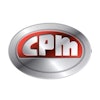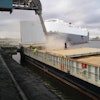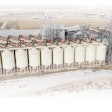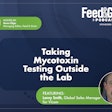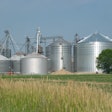In this episode of theFeed & Grain Podcast,Steven Kilger, managing editor for Feed & Grain, speaks with Jeff Marton, business development representative, automated control system solutions for plants and feed mills atRepete Corp., about how automation systems deliver more than just efficiency. Better work-life balance, safety and creating a more attractive work environment are all discussed, along with how to take the first steps on a mill’s automation journey.
Transcript:
Steven Kilger(00:00):
大家好,我的名字是史蒂文•Kilger管理editor for Feed & Grain and host of the Feed & Grain Podcast. Today my guest is Jeff Marton, business development representative, automated control system solutions for plants and feed mills at Repete Corp. We talk about how feed mill automation can help with labor shortages being seen across rural America. But before that, here is a bit of housekeeping, if you're listening to this podcast within a podcast app, please consider subscribing and/or leaving a review. If you have an idea for a topic, you would like me to cover or someone in the animal feed, grain handling or related industries that you'd like me to talk to. Let me know! This podcast page on feedandgrain.com has a button right under the title that lets you send an email directly to me. I'd love to hear from you, with that out of the way. Well, Hi, Jeff. Thanks for talking to me today,
Jeff Martin(00:48):
Thanks for having me on the show. Steven. Actually, is it a show?
Kilger(00:53):
Yeah, It's a show. Podcast? I don't know what kids are calling the new media these days.
Martin(01:00):
Thanks for having me on. And I'm happy to be here.
Kilger(01:02):
So, why don't you tell me and the listeners a little more about yourself and your background in the industry?
Martin(01:09):
Working in the ag industry is more of a second career for me. I spent about 20 years in the IT consulting business, doing system design. So working in the ag industry is, I've been here for about five years now. And it's very similar to what I do in terms of trying to work with customers and embracing long-term relationships so that you can fully understand their client requirements and strategies. So, there are some similarities between the IT world and the design world, and there are in the automation portions of the ag industry.
Kilger(01:43):
Especially with automation and control system products, right? It has a really good background.
Martin(01:51):
I'm not an actual software programmer. I'm more on the consulting design side, working with the clients trying to understand requirements and making sure that we can provide the solution that fits them.
Kilger(02:04):
Well, then, you're perfect to talk to about this. When I think about an automated in a feed mill, I usually break it into sections. Can you break down kind of the different sections of the feed mill that can be automated? Or have a process control solution installed into it?
Martin(02:26):
Sure. We tend to call the sections process areas, and it doesn't make much difference how you title them. Anywhere from receiving, grinding, and batching, are some of the process areas. Pelting extrusion, load out and reclaimed transfer between storage bins and source bins. Those are all process areas that can be automated.
你能做的所有领域;你可以做个人工作process areas, and you don't have to do them all. But the more you tie it together, then the more efficiency you can get out of it by going end to end. But you can do any of them individually, or you can do them all, as well as supporting business automation by communicating with the business systems, ERP accounting inventory formulation, and software. So there are a lot of areas that can be automated.
Kilger(03:19):
You mentioned efficiency. But there are a lot of advantages to putting automation in your facility, including giving your workers a little more space and a little more opportunity to do tasks. What do you see as the advantages for managers, employees and customers of having an automated feed mill?
Martin(03:21):
Well, one of the first ones that people think of is labor reduction. And from my perspective, we don't normally focus on reducing the number of people but in terms of freeing up their time to do more of their strategic tasks, as opposed to spending more of their time doing menial tasks. And a lot of the automation provides a lot of consistency. And repeatability in the process that they're managing provides a lot more accuracy and results in higher quality products that they're creating; it also allows them to have a little more safety. Keeping the laborers out manually, the fewer touches they have to do on the machine, the safety environment can be reduced waste by not having as many reworks done, and then from an ERP standpoint, the results in timely and accurate reporting structure as well. They don't have to spend as much time manually grading the reports and pulling the information, and transferring it back and forth.
Kilger(04:48):
Especially if they've linked those business programs to their automation system, right?
Martin(04:48):
Yeah.
Kilger(04:48):
What do you kind of see out there that you always rub your head and think, "that would be easy to automate." That would be a task that someone is doing that easily could become an automation system and free up a lot of time.
Martin(05:12):
As we talked earlier, every process area, when you walk in, and you see a mill that doesn't have the end-to-end automation in there, every time you see any of those areas you identified as that's, that really could be sped up a little bit that could be made more efficient. So every process area is eligible for that, oftentimes, though, you'll see them in the hand-add section, but they're not automated. And that itself, that's one area that could really benefit the manual tasks that you see them doing, ensuring the right product goes in the right bag to the right bucket, into the right mixer, ensuring the products weighed within tolerance, providing their ability to record and reconcile their discrepancies for inventory when they occur. That's all assisted by automation on the hand-add section. But oftentimes, you don't see plants thinking that the handout is something that's even possible for automation.
Kilger(06:07):
By the name alone, right? And you can think of people falling over big bags and scooping in ingredients. But how that work?
Martin(06:21):
Not only does it communicate to the scale, so it's capturing the weights, but you do have barcode labels that it does a scan. I'm scanning from the product source and scanning into the bucket. You can keep track of exactly which item is in each bucket. Before you actually enter it into the mixer, you have to scan it again to make sure that it's the right batch going into the right mix.
Kilger(06:46):
That assumption saves not only, well, it certainly cuts down on those mistakes, right, that human error element of everything.
Martin(06:55):
Correct. Correct.
Kilger(06:58):
More and more important with today's prices for things.
Martin(07:03):
There's always that human element, but there at least captures every one of those activities so that it's all reconciled and recorded. So nothing gets lost in the shuffle.
Kilger(07:12):
Any tasks that you see that take a lot of an employee's time that could be shortened or reduced by having an automation or control system in place?
Martin(07:23):
One of the areas where you can actually see some efficiencies is when the manufacturing orders populate the to production area. The operator has the visibility to what needs to be produced, and he can sequence the upcoming batches in order to fit. For example, the bagging system may have 25-pound bags lined up in it. He can look over the schedule and actually see which of the batches require the 25-pound bags, and they can sequence from those back to back and not have to worry about taking extra time to change bags out between batches.
Kilger(07:59):
That's what I love about automation. I've always been a bit of a technology geek, so it's been one of the more interesting things for me when covering the feed industry. And I love that it's one of those investments that pay back for people, right? Like you can save, it's all about efficiency. It saves you time and you get payback from your investment.
Are there common areas of a mill where even a small automation can create improvement? Say you're going from the basics, and you don't have a huge budget, but something that would really relieve the employee's workload pressure. We're hearing a lot about not having enough employees and those employees being kind of overworked and not have a great work-life balance. The feed industry is a hard job. Any low-hanging fruit out there that a facility could start out with to help everyone's work-life balance?
Martin(08:50):
One concept to consider in terms of the labor force that's out there trying to hire and retain employees that are interested in this industry. It's harder to get the younger generation to really want to be in a feed mill. But when you introduce technology like this, it really gives them an opportunity to use the skills that they've been growing up with. And it lets them feel more in touch with the mill itself. That's one benefit to attracting some of the younger generations in the mills themselves.
Most time, you start off with the batching and mixing, which is the core that everything can branch out. It's easy to add different process areas either in front of that or behind that. But that's usually the part where you begin is the batching process area. Although, like I said earlier, you don't have to do consecutive. You could just automate the receiving function itself and make it easier when the trucks come in and organize and ensure where the commodities end up in which bins so you don't cross-contaminate, put them in the wrong places. It all depends.
Most of the time, you might want to just start with an assessment from an independent consultant, so to speak, to kind of look over what your processes are and identify where those low-hanging fruits are because every mill is different. They're not all the same in terms of where they have their pain points or their bottlenecks. So a second set of eyes can identify some things that you haven't identified yourself.
Kilger(10:28):
That's a good point. When people are interested in beginning to automate, a good first step is contacting a company like Repete and having them come out to take a look.
Martin(10:40):
As a matter of fact, that's partly what one of my job functions is when I am initiating those relationships acting as that consultant for the first few visits. Once we get the project a little more defined, then we'll send in an actual engineer to spend a few days looking through all the individual behaviors. M first step is to do that once over with the customer, review what they're doing and kind of give them some fresh opinions from an outsider's view.
Kilger(11:11):
Automation is more of a partnership than a lot of other pieces of equipment. You guys are kind of in it together.
Martin(11:25):
It's a long-term process, so you don't just pick one day, then a week later, you have automation that you have actually spent a lot of time planning for what that strategic vision looks like and then building a plan for it. It takes a while it takes time. Sometimes it's a couple of years from the time you start getting that vision to the time to get it implemented. There's a lot to be considered in that process.
Kilger(11:48):
Those are all the questions I have for you, Jeff. Thanks so much for stopping by and talking with me today. Is there anything else you'd like to get into the industry?
Martin(11:57):
No, just automation is the way to go. That's the wave of the future. We're getting closer and closer to the concept of that lights-out automation, where you're actually turning off the lights and letting the employees monitor remotely. But we're not there yet. But if you haven't embarked on the automation journey yet, you got to get started.
Kilger(12:18):
One day, hopefully, fingers crossed. I've been teased with that lights-out facility since I started.
Martin(12:25):
It's been a tease for a while. All of us would like to see it a lot more.
Kilger(12:28):
Jeff, thank you so much for joining me today.
Martin(12:41):
Thanks, Steven. It was a pleasure to be here,
Kilger(12:43):
Of course. And thank you for listening. I hope you enjoyed the podcast, and I hope you'll be back for the next one. Until then, I've been Steven Kilger and thank you for listening.

.jpg?auto=format%2Ccompress&crop=faces&fit=crop&h=48&q=70&w=48)
